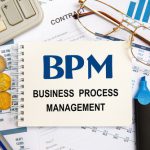COVID-19 permanently altered how we all do business in many ways, not the least of which may be the extraordinary growth robotic process automation (RPA) has encountered over the past two years. The RPA market took off because of the pandemic’s remote working conditions and surges in supply and demand. The primary objective of implementing RPA technology is to lower the time and exertion required by humans to perform tedious and repetitive tasks. RPA permits software robots to perform routine operations that would somehow be completed by intelligent humans, restricting errors, saving money, and opening up resources to focus on the most critical tasks that require human intervention.
Forrester predicts 35% of service companies will introduce physical robot workers in 2022 simply because healthcare, food service, and warehouse businesses can’t fill the number of job openings they are now facing. The global robotic process automation market is projected to grow from $1.61 billion in 2021 to $7.64 billion in 2028 at a CAGR of 25.0%.
If you are an organization interested in process automation and what RPA trends will dominate in 2022, here are some key RPA trends,
Intelligent Automation
RPA will be more incorporated with AI and Machine Learning techniques by 2022. Intelligent RPA, also known as cognitive RPA, or semantic automation, refers to expanding RPA tools with AI and machine learning capabilities like natural language processing (NLP), optical character recognition (OCR), and deep learning. Intelligent RPA enables businesses to automate repetitive, rule-based tasks and predictions and forecasts based on structured and unstructured data. It is expected an increase in the adoption of intelligent RPA as spending on RPA and intelligent process automation is expected to reach ~$35B in 2023.
RPA Centers of Excellence
The global RPA market is projected to reach $12B by 2025, and there is increasing adoption of RPA to automate different business functions among different industries. Nonetheless, the more bots are deployed to automate various tasks, the more cost, time, and effort is spent. Hence RPA Center of Excellence (CoE) is becoming one of the top RPA trends in 2022. The RPA CoE may comprise IT experts, RPA consultants, process managers, functional experts representing various teams. The role of this CoE is to establish a governance model, best practices, and expertise to optimize the return on investment. Establishing an RPA CoE has multiple benefits, like improving the efficiency of the bot development cycle and integrating RPA with IT.
RPA-focused MSPs
Due to RPA adoption cost and extended time to solution roll-out, organizations turn to managed service providers (MSPs) that offer RPA as a service to outsource their automation tasks. MSPs can deliver businesses with automation capabilities without requiring any RPA infrastructure or training at reduced prices in the short term. So far, only 5% of MSPs provide RPA as a Service to their partners. However, it is estimated that RPA will become an embedded feature in many platforms. Therefore, we expect more IT-oriented MSPs to provide RPA as one of their main services.
Low code Platforms
Citizen developers build new business applications using development and runtime environments advocated by IT. They are progressively ‘automating’ and enabling businesses to automate at scale. There is a requirement for various low/no-code SaaS platforms that help create functional RPA solutions faster for them to thrive. Low-code platforms use a visual and intuitive way to develop. This can be used to automate tasks, end-to-end processes, and workflows. According to research from Gartner, low-code will be accountable for 65% use of application development, and 3/4 of large enterprises will be using multiple low-code development tools for both IT development and citizen development activities by 2024.
RPA adoption in SMEs
In the fallout of the pandemic, small and mid-size enterprises (SMEs) have realized the significance of process automation for their organizations to stay competitive and resilient. Today, many SMEs are looking at RPA technology examples to streamline enterprise operations and cut down on costs. During a global survey that interviewed executives, 73% of respondents said that their organizations have embarked on a path to intelligent automation. In the coming years, SMEs will continue to adopt RPA solutions at a faster pace as it brings comprehensive intelligence actionable information, better insights, high accuracy, and lower costs.
RPA in Automating Cybersecurity
It takes 280 days to find and contain the average cyberattack, typically costing ~$4M. It is estimated that 95% of cybersecurity breaches are caused by human error. With the increasing volume of cyberattacks that organizations face every day, more business leaders are considering AI and automation solutions to handle threats. Robotic process automation bots can limit the risk of cybersecurity exposure by overseeing privileged data entry, eliminating unauthorized access, improving detection accuracy, updates, and transfer via email or messaging apps, eliminating human errors which lead to system gaps making them prone to attacks.
In recent years, RPA bots and sophisticated automation (AI) solutions have become progressively significant for businesses to survive and thrive. The global RPA industry has made colossal advances in 2020-2021. And 2022 might just prove to be the tipping point for RPA, where it expands into newer terrains adds new capabilities. Automation will keep on solidifying its position as a must-have enterprise technology with RPA at its heart as RPA has the potential to drive your business to new heights by allowing you to give a more custom-fitted and improved client experience.

Senior Vice President and Head of CoE, Digital Process Automation at Happiest Minds Technologies, comes with over 23+ years of experience across Business Consulting, Analytics and Automation. He has worked as a consultant in Operations Transformation, IT Strategy, Outsourcing and has led the Global Analytics capability in the areas like Risk Analytics, Marketing Analytics and Supply Chain Analytics.
Sundar studied Computer Science & Engineering at IIT Delhi and is a gold medalist in Marketing & Finance from XLRI Jamshedpur.







